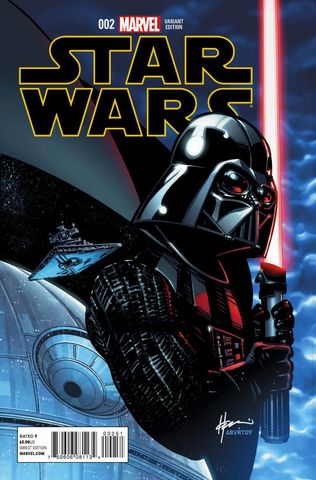 We knew early on that a group piece would be in the cards to celebrate this, the one-year anniversary of the Legends announcement. But without really planning it, it just sort of worked out that several of us had their own larger commentaries to offer on the reboot, modern fandom, and the current state of continuity—such that by the time we got around to today’s piece, I thought something more distinct was warranted.
We knew early on that a group piece would be in the cards to celebrate this, the one-year anniversary of the Legends announcement. But without really planning it, it just sort of worked out that several of us had their own larger commentaries to offer on the reboot, modern fandom, and the current state of continuity—such that by the time we got around to today’s piece, I thought something more distinct was warranted.
With that, allow me to present Yankee Canon Swap! Which is an odd title that basically means I told the gang to pick a canon story to replace with a Legends one they preferred. But! That would be too easy, and really, borderline whiny. The thing is, there are very few canon stories to choose from at this point, and (though opinions vary) there isn’t really one universally agreed-upon stinker in the bunch that would make for an easy answer—so what I wanted was to get us thinking about Bigger Things than just which stories we liked and which we didn’t; I wanted to talk about priorities, by potentially forcing ourselves to reject a good canon story because what it represented wasn’t important enough to us as what some other story represented.
To that end, I introduced what I nerdily called “Teenage Mutant Ninja Turtles III rules”—if you’re not familiar with that high point of modern science fiction, the plot hinges on a time-travel device that operates according to mass displacement: it can send you into the past, but only by bringing something the same size up into the present. What that meant here was that I couldn’t swap Tarkin, say, with the entire Thrawn Trilogy, or Darth Vader with the entirety of the Knights of the Old Republic comics—one novel for one novel, one comic issue for another comic issue, etc.
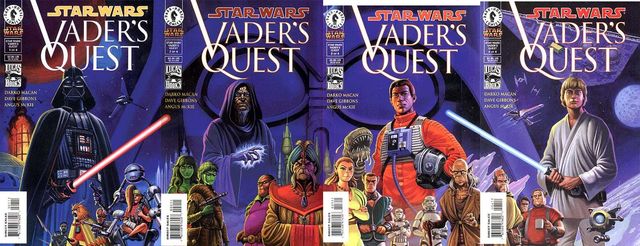
As an example, allow me to present my own choices: I decided to eliminate the first two issues each of the Star Wars and Darth Vader comics, and replace them with the four issues of Vader’s Quest. To my mind there’s not a bad story in the bunch, but the reasons for my choice were several: primarily, I see Vader’s Quest as the best possible version of a “Vader finds out who Luke is” story. While I have no doubt Jason Aaron and/or Kieron Gillen will do the premise justice when they inevitably get there (and they will), the decompressed nature of their storytelling means that I’d rather they spend their time on the books doing other things—as much as I want to believe otherwise, the Marvel veteran in me can’t help but expect time jumps in both series (at least into the vicinity of Empire) within a year or two as the weight of the franchise leans past the original trilogy into the sequel era. If I’m not going to get the huge, luxurious runs on both series that I’d really like to see fill in the three years after A New Hope, I’d at least prefer that what I do get covers fresh ground not repeatedly trod in the Expanded Universe.
In addition, this swap would mean eliminating the early Vader/Luke confrontation that I didn’t really mind so much but caused Ben Crofts much consternation, so why not do a good turn for a friend while I’m at it? And last but not least (okay, least), I had hoped that taking out the first issues of Vader meant I could pretend for a while longer that Boba Fett wasn’t about to appear on Luke’s tail, but alas, Star Wars #4 just this week made that impossible. Oh, well.
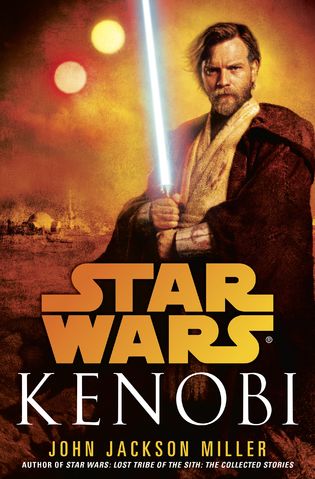 Ben: Miller versus Luceno and Miller wins! Well, OK, it’s Tarkin Luceno versus Kenobi Miller, puts the odds in Miller’s favour quite a bit.
Ben: Miller versus Luceno and Miller wins! Well, OK, it’s Tarkin Luceno versus Kenobi Miller, puts the odds in Miller’s favour quite a bit.
Why do the swap at all? Tarkin is, for me, Luceno’s weakest work in ages. To be fair, the odds are not in his favour due to the lead character. When you have a scheming, evil mastermind at work it can be fun seeing the various manipulations at work. When you have, instead, a general psychopath whose solution to every problem is to take a sledgehammer, the interest quotient goes way, way down fast.
In contrast, Kenobi is the kind of story that should never have been thrown out. In being an actual western, it conjures up the description of ANH when it came out, a ‘western in space’ but it becomes far more than that. In its depiction of the Tuskens, Miller gives them a surprising amount of depth and renders them as far more than the savage villains we have previously seen them as. In this way Kenobi challenges the reader’s preconceptions in a way Tarkin doesn’t.
At the same time the eponymous lead is excellently portrayed. Kenobi is supposed to drawing no attention to himself, he is supposed to only be keeping watch over Luke, but he just can’t stop himself from helping others. It simply isn’t in his nature. There’s also his meditations that are addressed to his long gone master Qui-Gon that show us Kenobi’s progression in healing, in part, from the assaults that Revenge of the Sith inflicted.
And then there’s the magical and mystical aspect of the Force that floats above and around the book. In the lightsaber sequences Miller is wonderfully restrained, the reader only gets a few pieces to put together a partial picture of what happened. Kenobi may not be able to keep that low a profile, but he ensures his lightsaber does.
In sum, Kenobi is a tale of kindness and commonality, while Tarkin is all about a person losing that and celebrating and glorying in it. Finally, I miss Kenobi being part of the official continuity – I wouldn’t miss Tarkin!
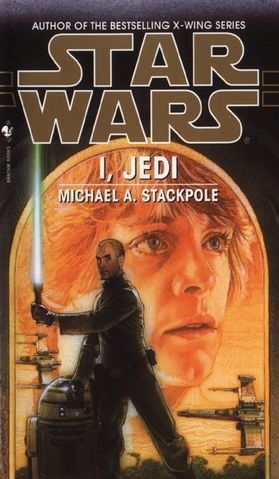 Lisa: I’d like to drop Heir to the Jedi and put in I, Jedi. Shocking that I’m writing this, right? Stackpole’s I, Jedi was such a better story concerning being an heir to the Jedi. We got to follow Corran Horn on his journey to becoming a Jedi. I actually think HttJ is mis-titled. Sure there were some force related things in the book, but for the most part it really wasn’t about Luke’s journey to become a Jedi which is why I, Jedi is a much better book as far as a journey to become a Jedi. Even in I, Jedi when the story went away from the academy, Corran Horn was still discovering more about being a Jedi. He found information from his grandfather and built himself a lightsaber all while on a quest to find his beloved, Mirax. Luke moved a few noodles around at the urging of people who had no relation to the Force at all and became a grave robber in a side story that was really more about him getting to fight a creature than learn about the Jedi of old.
Lisa: I’d like to drop Heir to the Jedi and put in I, Jedi. Shocking that I’m writing this, right? Stackpole’s I, Jedi was such a better story concerning being an heir to the Jedi. We got to follow Corran Horn on his journey to becoming a Jedi. I actually think HttJ is mis-titled. Sure there were some force related things in the book, but for the most part it really wasn’t about Luke’s journey to become a Jedi which is why I, Jedi is a much better book as far as a journey to become a Jedi. Even in I, Jedi when the story went away from the academy, Corran Horn was still discovering more about being a Jedi. He found information from his grandfather and built himself a lightsaber all while on a quest to find his beloved, Mirax. Luke moved a few noodles around at the urging of people who had no relation to the Force at all and became a grave robber in a side story that was really more about him getting to fight a creature than learn about the Jedi of old.
There’s also the controversy of fridging a useful female character in Heir to the Jedi that can be done away with if we eliminate it from canon.
Plus Corran Horn is then canon again. Hey, a girl can dream!
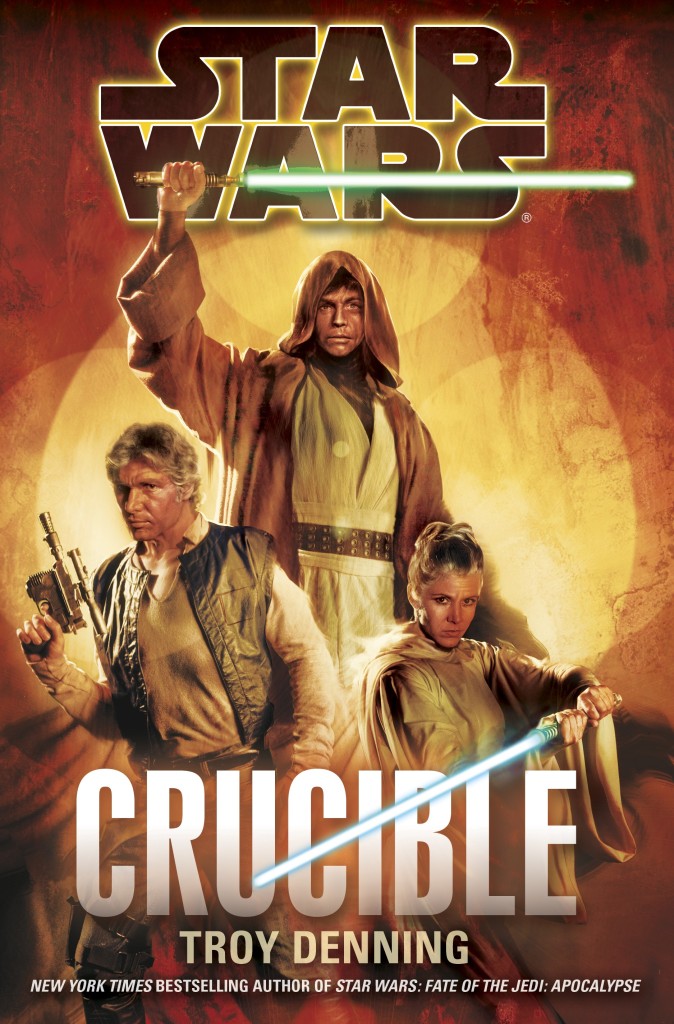
Rocky: Okay, bear with me on this one. I’m going to support the removal of A New Dawn, decent though it is, and ask for the return of Crucible.
For all that A New Dawn was a good book, and fits well with what Star Wars needs right now, we also need to think about the timing of what’s coming in the future. There have been a lot of Rebellion-era works out lately, since there aren’t many other eras in the Star Wars sandbox to work in. A New Dawn provides some good background for the Rebels TV show, but for me at least there was a big disconnect. A New Dawn is pretty firmly a teen- and adult-oriented book, while Rebels remains very kid-friendly even in its darker episodes. Many of the kids who are interested in Rebels might not yet be old enough to read A New Dawn, and perhaps that time of Star Wars history would be better served by more young-reader oriented books. Or better still, we could allow the current storytelling to continue in the form of comics, TV shows, and a few other books. Something has to wrap up the adventures of post-ROTJ Star Wars.
TFA is picking up thirty years after Return of the Jedi. Crucible starts 42 years post-ROTJ, and is a Han, Luke, and Leia- centric book. Yes, there was a lot of pushback about the plot and how confusing it was. And a great many of us aren’t sure how we feel about this book being the end of the EU chronologically. It does have some very valuable points.
The major reason I’d like to see Crucible recanonized, though, is because of its place as a sort of capstone of the EU. It is a reasonably self-contained book, utilizing plot elements brought in from the Clone Wars TV show, and with a plot that doesn’t exceptionally link into previous EU. Being a reasonably standalone book, it can be read without substantial knowledge of how Han, Luke, and Leia got where they are- and if the events that led them to that point aren’t formally laid out, it gives a framework for future books. As a bonus point, we get to see Leia being a Jedi and seen as having equal potential with Luke! That’s something that often gets glossed over, and getting to see Leia being a competent Force-user on her own might be something we see again, if that new TFA teaser is any indicator. By the end of the book, the Big Three realize that they need to step back and let the next generation take over. It’s kind of a symbolic passing of the torch, and that in particular is something we need for the future.
Alexander: I’m also going to have to vote for the removal of James Luceno’s Tarkin, this time in favor of Sean Stewart’s lone venture into the Expanded Universe, Yoda: Dark Rendezvous.
Don’t get me wrong: I enjoyed Tarkin well enough, but probably for all the wrong reasons. Somehow, I don’t think Luceno quite planned to give his readers fits of uncontrollable laughter when he transformed Peter Cushing’s Grand Moff into your stereotypical backwoods outdoorsman and hunting enthusiast, from a family of the same kind.
Perhaps had the novel been significantly longer, and had Luceno removed the inconsequential present day plotline entirely, it might have been able to give Tarkin’s treatment the depth it deserved, but in the end it probably did more harm to his character than good. And it gave us Sheev, which is the best reason of all to pretend that none of it ever happened.
 Yoda: Dark Rendezvous, on the other hand, is quite possibly the best thing to come out of the prequel trilogy, not excluding all three films. Why Sean Stewart was never called upon to write anything else, I will never understand. Nowhere else in the Expanded Universe will you find a better Dooku or Yoda: their interactions in this book carry far more weight and meaning than their brief encounter in Attack of the Clones, and the writing is as good as you’re likely to find anywhere in the franchise.
Yoda: Dark Rendezvous, on the other hand, is quite possibly the best thing to come out of the prequel trilogy, not excluding all three films. Why Sean Stewart was never called upon to write anything else, I will never understand. Nowhere else in the Expanded Universe will you find a better Dooku or Yoda: their interactions in this book carry far more weight and meaning than their brief encounter in Attack of the Clones, and the writing is as good as you’re likely to find anywhere in the franchise.
There are other memorable and prominent characters (I’ve always had a particular fondness for Fidelis, the “gentleman’s personal gentlething” and assassin droid), of course, but it’s really the depiction of these two that forms the core of the book worth preserving. While it does make an inconvenient number of references to things which are no longer in continuity, it comes with relatively few loose ends attached that can’t be conveniently tied up by the events of Revenge of the Sith. It even makes room for Asajj Ventress, which would fit in well with her appearances on The Clone Wars, which remain part of the new canon.
Ultimately, it all comes down to the fact that Yoda: Dark Rendezvous enhances the viewing of the prequel trilogy (as much as such a thing is possible), while Tarkin only detracts from the Grand Moff’s appearance in A New Hope.

Well at least now we know that Rocky wasn’t exaggerating on Twitter earlier this week.
You want….Crucible…in the new canon. I am….wow.
Ben wins. Mostly because his is probably the least controversial of all of these.